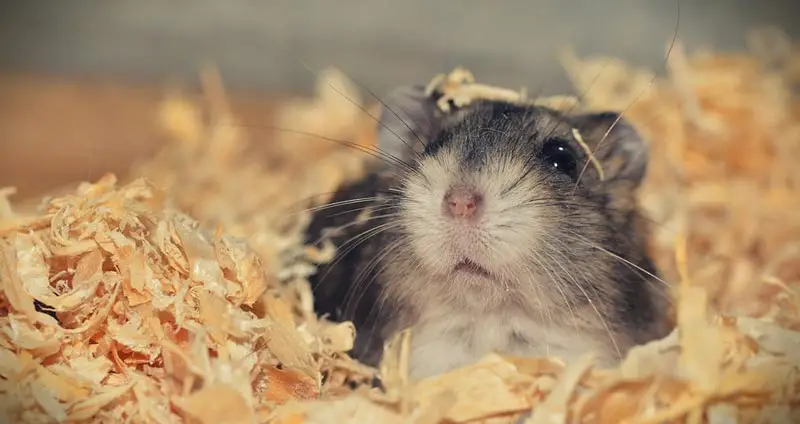Hamsters are some of the most popular pets today. Their adorable appearance, fun personality, and relative ease of care makes them a great choice for all households and all ages.
If you’re looking to bring home a new pet hamster (preferably from a hamster breeder), you may want to know about the different types of hamsters that exist. Everybody wants to bring home a pet that’s best-suited for them, and a good insight into the different types of hamsters will help with that.
So, in this post we will be highlighting all of the different kinds of hamsters that exist. This information will give you the knowledge to go find a hamster that’s perfect for your home!
Table of Contents
How Many Types Of Hamsters Are There?
Hamsters belong to the subfamily Cricetinae, which contains 19 different species of hamsters that fall under 7 genera. These hamsters come from different geographical regions and have different physical attributes and behaviors.
Of these hamsters, many are rarely kept as pets. The 5 most commonly-kept types of hamsters for pet owners are Syrian hamsters, Campell’s Dwarf hamsters, Roborovski Dwarf hamsters, Winter White Dwarf hamsters, and Chinese hamsters.
5 Common Pet Hamster Species
- Syrian Hamster
- Campbell’s Dwarf Hamster
- Roborovski Dwarf Hamster
- Winter White Dwarf Hamster
- Chinese Hamster
14 Other Hamster Species
- Chinese Striped Hamster
- Ciscaucasian Hamster
- European Hamster
- Eversmann’s Hamster
- Gansu Hamster
- Greater Long-Tailed Hamster
- Grey Dwarf Hamster
- Kam Dwarf Hamster
- Long-Tailed Dwarf Hamster
- Mongolian Hamster
- Romanian Hamster
- Sokolov’s Dwarf Hamster
- Tibetan Dwarf Hamster
- Turkish Hamster
19 Different Types Of Hamsters
There are 19 officially recognized types of hamsters that are a part of 7 different genera. The first 5 hamsters listed are hamsters that are commonly kept as pets. The following 14 types of hamsters listed are mostly found in the wild and are almost never kept as pets.
1. Syrian Hamster
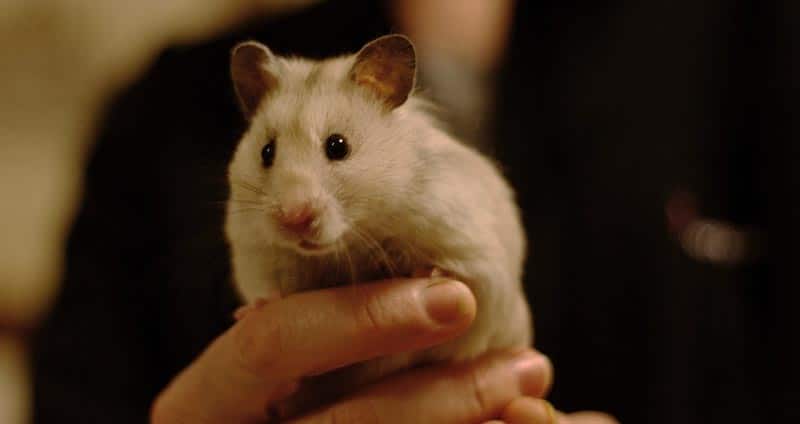

Syrian hamsters are one of the most common types of hamsters that are kept as pets. These creatures can grow up to 6 inches in length, making them one of the largest species as well.
They usually have a golden brown color with darker markings around their cheeks.
In terms of personality, Syrian hamsters tend to be more solitary, meaning that they should be kept alone in their cage. They can get along well with their owners, too, as long as proper interaction is taking place and regular entertainment is provided.
2. Campbell’s Dwarf Hamster
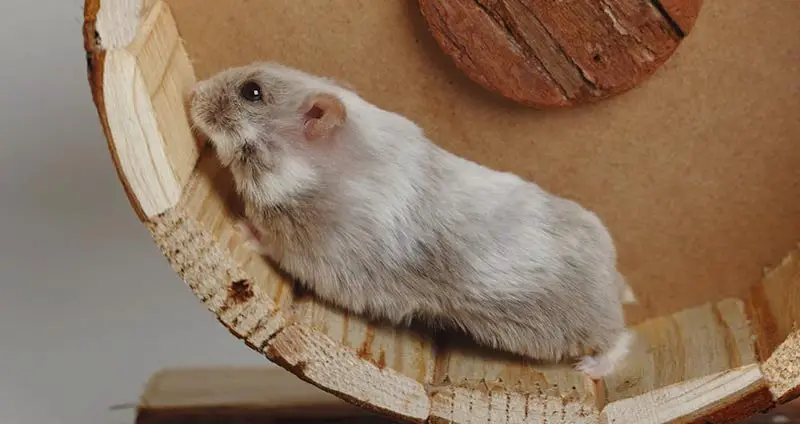

One of two species of Russian dwarf hamsters, Campbell’s Dwarf hamster is very commonly found for sale in pet stores, often falsely identified as Siberian dwarfs. They get their name from Charles William Campbell, who first caught one in Mongolia back in 1904.
While most dwarf species are limited in their colors, this species can come in a wide variety of different colors and sheens. They’re also very bold, friendly, active, and fun to watch.
Campbell’s Dwarf hamsters are best kept in small groups, but they can still become territorial. This means that they’re best kept in very large hamster cages.
Additionally, this species is genetically predisposed to diabetes.
3. Roborovski Dwarf Hamster
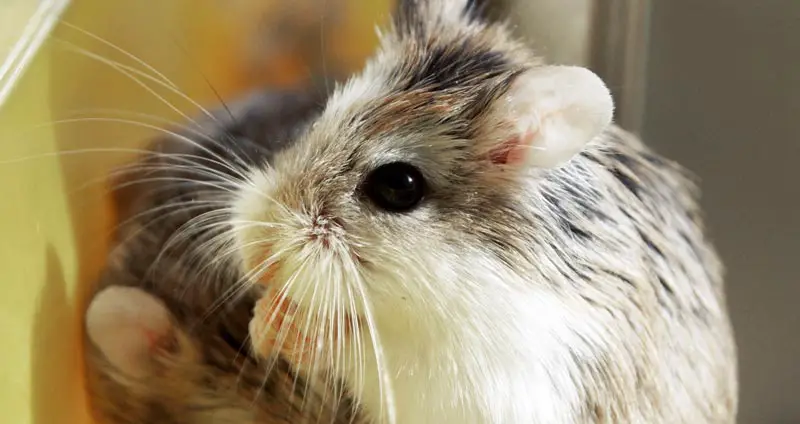

These tiny hamsters originally roamed throughout the deserts of central Asia, but they’ve become popular pets recently due to their fun temperament and tiny size.
When we say tiny size, we mean tiny. These hamsters reach an average length of 2 inches, and their fluffy fur that comes in a variety of different colors makes them look extremely cute.
This is a very energetic and wild species, meaning that it isn’t great for children or people that want to handle their hamster frequently. Therefore, they’re best to just observe, and fortunately they put on quite a show.
Despite their small size, Roborovski hamsters require an extremely large hamster cage and a plethora of different toys.
4. Winter White Dwarf Hamster
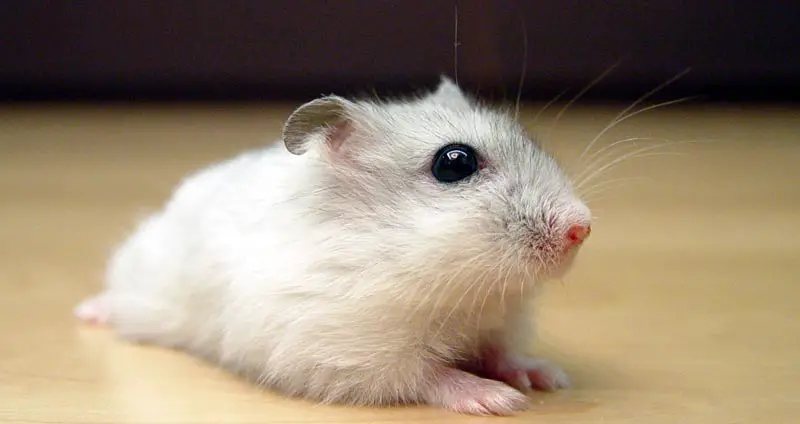

This hamster is very similar to Campbell’s Dwarf hamsters but has a different body shape and comes in different colors. They also tend to be a bit more mild-mannered and reserved than Campbell’s hamsters.
Winter White Dwarf hamsters get their name from the fact that their gray fur usually turns white in the winter in order to disguise themselves from predators.
This species can cross-breed with Campbell’s hamsters, so it’s difficult to find a 100% Winter White Dwarf hamster.
5. Chinese Hamster
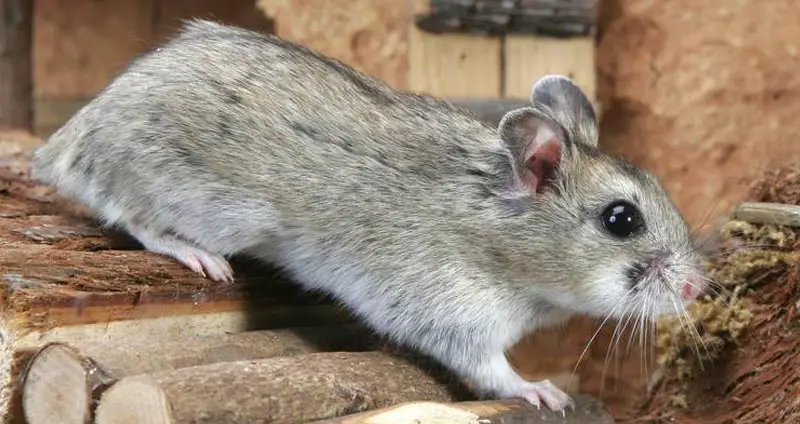

This very tiny dwarf hamster isn’t actually a true dwarf, but it does only grow to about 3 inches in length.
Chinese hamsters are very energetic, so this trait combined with their small size means that they aren’t easy to handle. They also require very large enclosures with plenty of room to run around.
Several states such as New Jersey and California have labeled the Chinese hamster as a pest, so special permits are required for ownership, selling, and breeding.
6. Chinese Striped Hamster


The Chinese Striped hamster is native to central and eastern Asia and makes a home in aris and semiarid grasslands and steppe.
These hamsters live in long burrows that they emerge from in the early hours of the night to forage for seeds.
It has an average body length of about 3.9 inches with a short snout, wide-set eyes, and dark rounded eyes. In terms of color, it’s mostly a light greyish-brown with a faint stripe on the spine.
7. Ciscaucasian Hamster
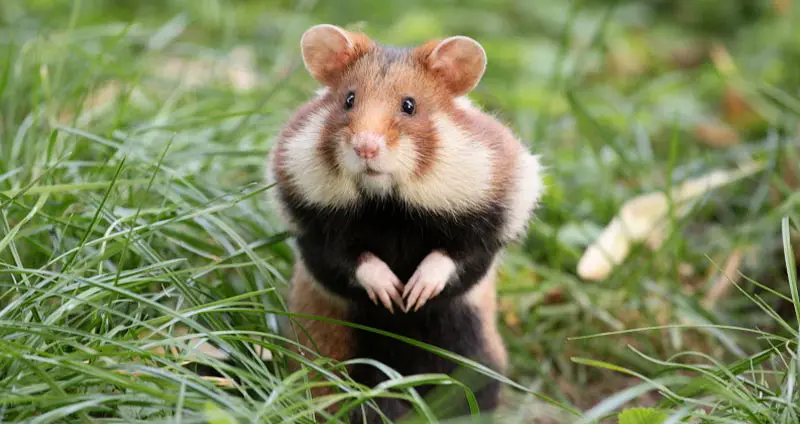

Also known as the Georgian hamster, the Ciscaucasian hamster is found only in Georgia and Russia. It’s found in both grassy and mountain steppes at high elevations and favors pastures and cultivated land.
This is a very large hamster with a body length of about 11 inches. It has a yellowish-brown coloration with a white throat and black ventral region. It also has very large, rounded ears.
While cute, this hamster is considered an agricultural pest as it feeds on grasses, herbs, seeds, and various crops. It has extensive burrow where it stores large amounts of food.
8. European Hamster


The European hamster is the only species in the genus Cricetus. It’s native to a large area in Eurasia, ranging from Belgium to the Altai mountains to Russia.
This species of hamster is considered an agricultural pest as well, and it’s often hunted for its fur. While globally it isn’t considered endangered, it’s considered critically endangered in several Western European countries.
European hamsters are crepuscular and eat seeds, legumes, grasses, vegetables, and insects. They’re frequently solitary.
9. Eversmann’s Hamster
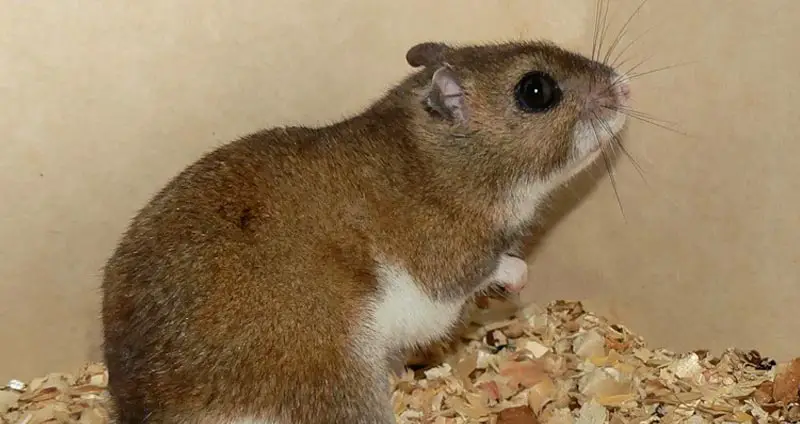

Endemic to Kazakhstan, Eversmann’s hamster was named after the Russian naturalist, zoologist, and explorer Eduard Friedrich Eversmann.
It’s part of the family Cricetidae, which is the second largest family of mammals.
10. Gansu Hamster
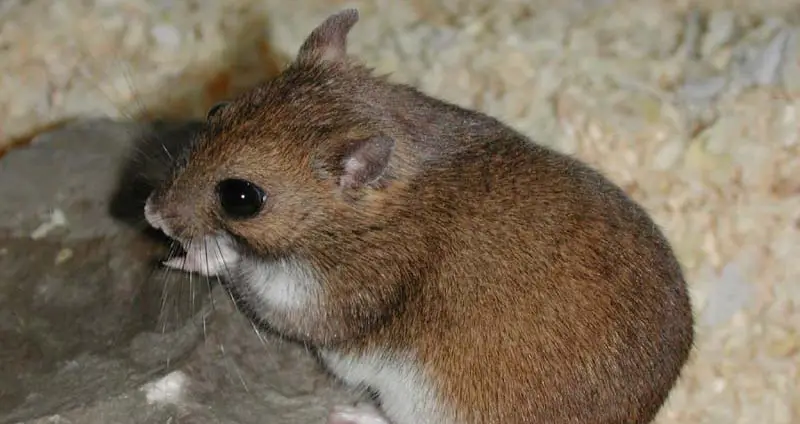

The Gansu hamster is also a part of the family Cricetidae. It’s endemix to China, and is the only species in the genus Cansumys.
11. Greater Long-Tailed Hamster
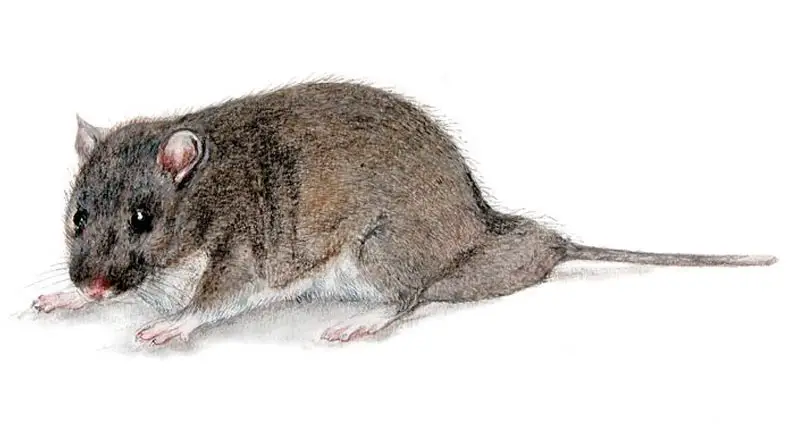

Residing in Northern China, the Greater Long-Tailed hamster is the only member of the genus Tscherskia.
It’s considered a major pest in China since ancient times, eating crops rampantly throughout the year.
It also frequently stands up on its hind legs and loudly screams as a means of communication.
12. Grey Dwarf Hamster
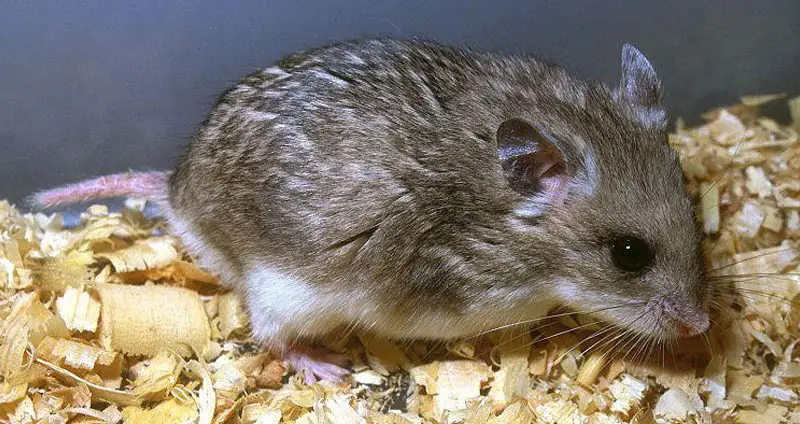

A common hamster species that Extends from Eastern Europe through the Middle East, Russia, Central Asia, Mongolia, and western China.
They Grey Dwarf hamster has an average body length of 4 inches with a furry tail that’s about 1/3 of that length. Its fur is brownish-grey with white underparts. It also has large ears and a flattened skull.
This species digs burrows as deep as 5 feet beneath the ground. It doesn’t hibernate, so year-round it forages for roots, plants, seeds, and hunts insects.
13. Kam Dwarf Hamster


The Kam Dwarf hamster is only found in the mountains of western China, specifically in grasslands, shrubby marshes, and steppes.
This species has an average body length of about 4 inches with a 2 inch tail. It has a greyish-brown coloring on its dorsal fur that’s sometimes spotted or streaked with black. Its underside is greyish-white.
It digs burrows to an average depth and is active both day and night. It forages for grain and seeds and also hunts insects.
14. Long-Tailed Dwarf Hamster
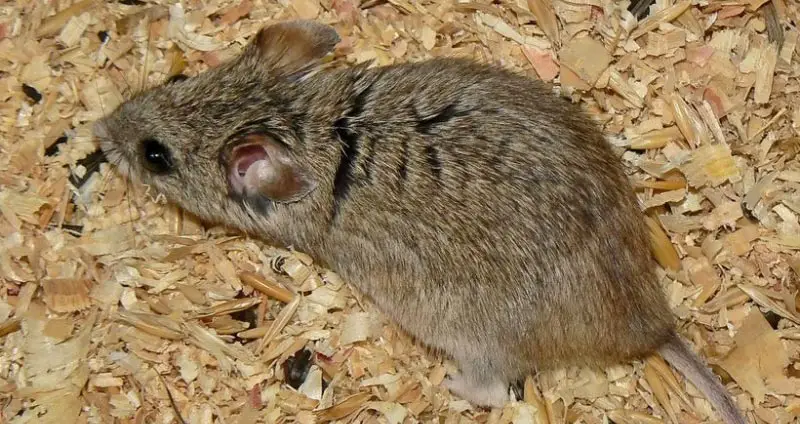

The Long-Tailed Dwarf Hamster is found in Russia, China, Kazakhstan, and Mongolia.
It has an average body length of about 4.3 inches with a tail that’s at least 1/3 of that length. It has a sandy brown dorsal coloraing with a greyish-white ventral coloring.
This creature inhabits arid areas with dry forests, rocky steppes, and shrubby slopes. It’s especially prominent in piedmont semidesert. It’s nocturnal and feeds on seeds and insects.
15. Mongolian Hamster
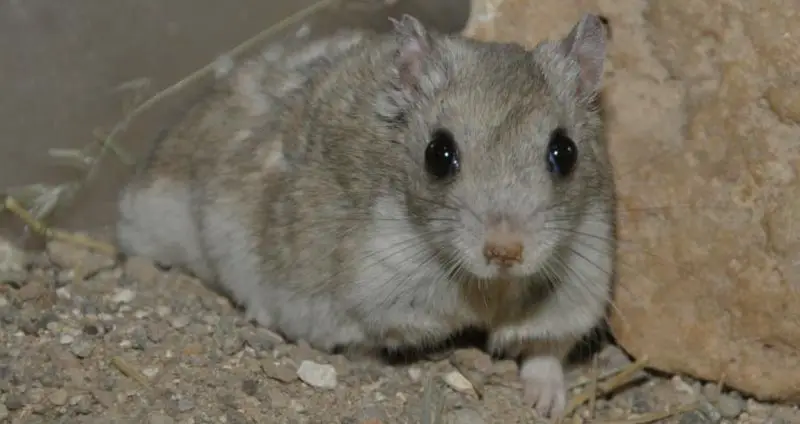

The Mongolian hamster is one of two members of the genus Allocricetulus. It’s found in China and Mongolia.
Coloration is relatively muted, with a sandy brownish-grey dorsal coloring and light grey ventral coloring.
16. Romanian Hamster
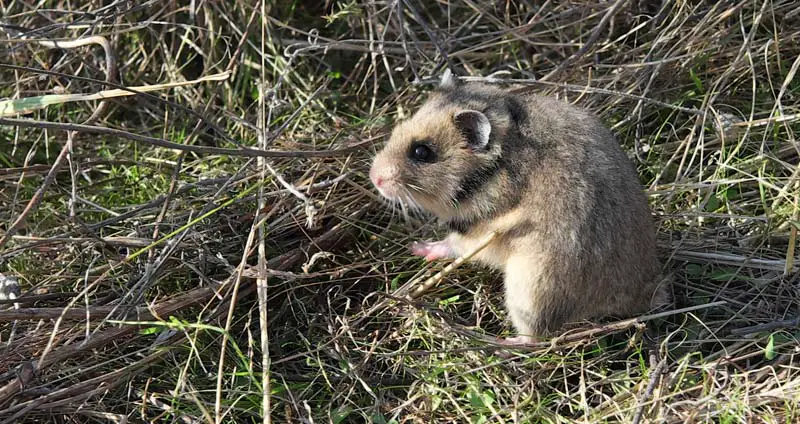

A species of hamster that’s found in both Bulgaria and Romania.
It features brown dorsal fur and a white underside with a black stripe running from the top of its head to its neck. It has a body length of around 7 inches.
This nocturnal species lives solitarily in complex burrows where it stashes and eats seeds, legumes, vegetables, grasses, and insects.
17. Sokolov’s Dwarf Hamster
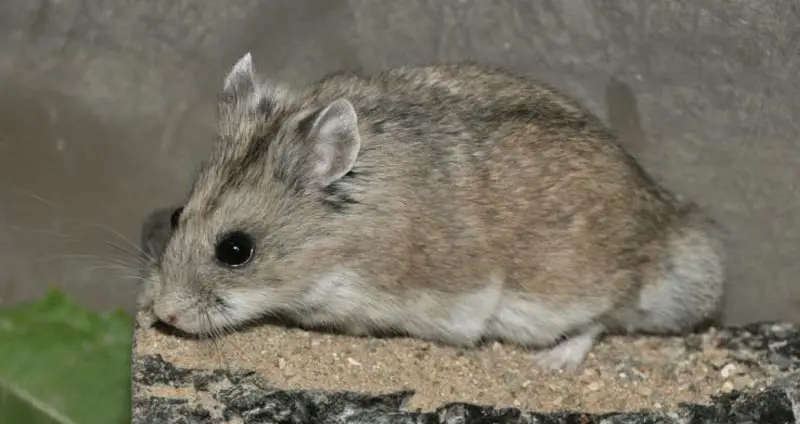

Sokolov’s Dwarf hamster was originally listed as conspecific with the Chinese Stripes hamster, but it was differentiated in 1988.
Its fur is grey with a light brown-yellow hue and a dark stripe running down its body. Its body length is about 3.7 inches with a 1 inch tail.
It’s found in China and Mongolia where it lives in burrows beneath desert shrubbery.
18. Tibetan Dwarf Hamster


Despite its name, this hamster species is found in India, Nepal, and China in addition to Tibet. It prefers mountainous regions, living in altitudes of up to 17,100 feet.
Specifically, this hamster lives in birch forests, desert steppes, scrublands, swampy grasslands, and Alpine meadows.
The Tibetan Dwarf hamster has a body length of about 4.1 inches with a tail reaching up to 1.5 inches.
19. Turkish Hamster
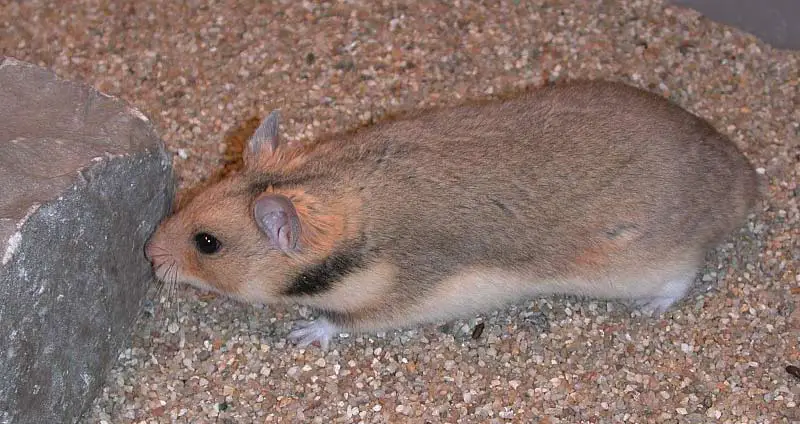

The Turkish hamster is a type of hamster that’s native to Turkey, Armenia, and several other surrounding nations. It’s very closely related to the Syrian hamster, but it’s more unknown and rarely kept as a pet.
In the wild, the Turkish hamster population is said to be declining, but it’s often still used in laboratory testing.
These extremely adaptable hamsters live in scrublands, sand dunes, farmlands, and desert steppes. These areas are very dry with little vegetation, so this hamster species burrows 6 feet under the ground for shelter.
What Type Of Hamster Makes The Best Pet?
There are essentially only 5 types of hamsters are kept as pets. Those are the Syrian, Campbell’s Dwarf, Roborovski Dwarf, Winter White Dwarf, and Chinese hamsters. These are domesticated hamsters that are commonly found in pet stores and are suitable for pet ownership.
All of the other hamsters that are listed have not been domesticated and are rarely kept as pets. That’s not to say that they can’t be kept as pets, but it definitely isn’t recommended.
Of the previously mentioned 5 types of hamsters, it’s really up to you regarding which is the best pet! Syrian hamsters are incredibly popular and can be handled/interacted with frequently. If you’re looking for a pet hamster to be involved with, Syrian hamsters are great.
However, if you’re looking for more of a display hamster that’s full of energy, Roborovski Dwarf hamsters are great. They’re not nice to handle, but they’re always doing something that’s interesting.
Campbell’s Dwarf hamsters, Winter White Dwarf hamsters, and Chinese hamsters are all middle of the ground in terms of what they offer, which is great. They have good energy, can be carefully handled, and are mostly friendly with proper handling.

